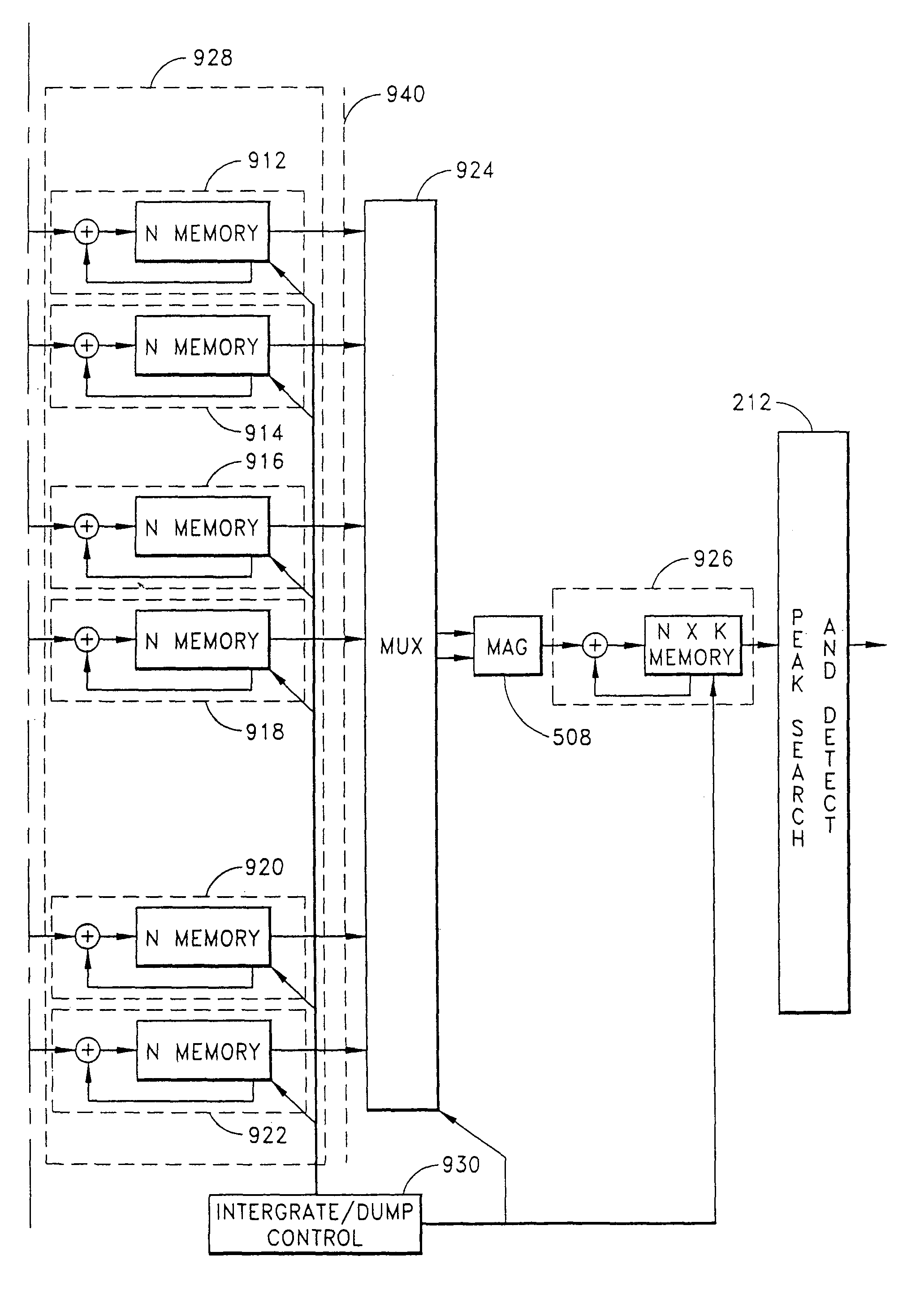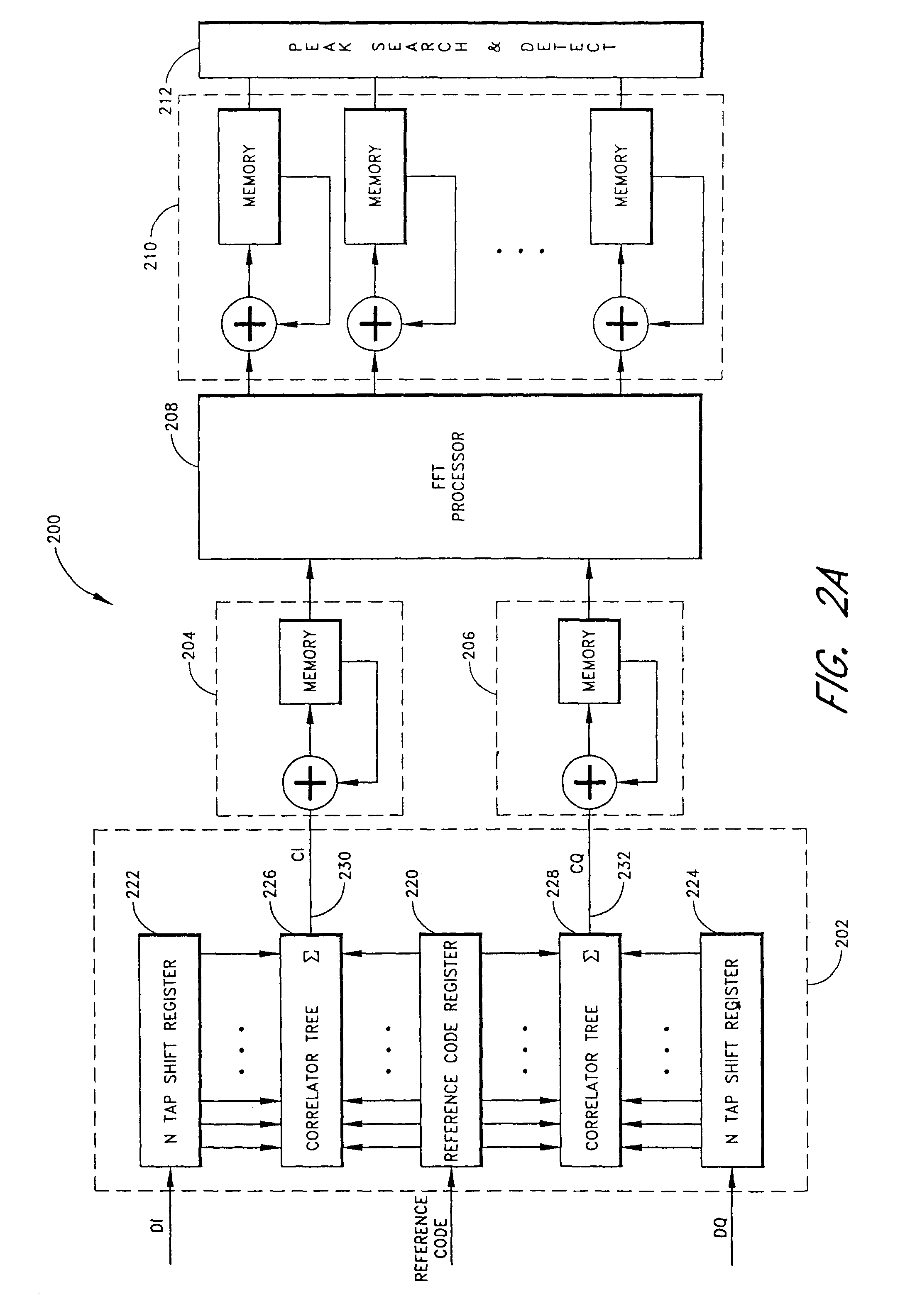Systems and methods for extracting coherent correlation data
a correlation data and coherent technology, applied in the field of systems and methods for extracting coherent correlation data, can solve the problems of increasing the acquisition time of a system is a frequency error or variance between, the gps the system may not be able to provide the user with useful information, so as to reduce the amount of total system memory and save circuitry
- Summary
- Abstract
- Description
- Claims
- Application Information
AI Technical Summary
Benefits of technology
Problems solved by technology
Method used
Image
Examples
Embodiment Construction
[0040]Although this invention will be described in terms of certain preferred embodiments, other embodiments that are apparent to those of ordinary skill in the art, including embodiments which do not provide all of the benefits and features set forth herein, are also within the scope of this invention. In particular, certain embodiments are shown in the context of a GPS receiver. However, the circuits and methods disclosed can apply equally well to other spread spectrum communications systems such as those found in cellular telephones and wireless Internet. Accordingly, the scope of the present invention is defined only by reference to the appended claims.
[0041]In a spread spectrum system, transmitted data is spread over a wider frequency band than the minimum band needed to transmit the data. In the GPS system, a satellite transmits its navigation data at a bit rate of 50 Hz with a pseudorandom noise (PN) code signal on a carrier of greater than 1 GHz. When a GPS receiver has lock...
PUM
 Login to View More
Login to View More Abstract
Description
Claims
Application Information
 Login to View More
Login to View More - R&D
- Intellectual Property
- Life Sciences
- Materials
- Tech Scout
- Unparalleled Data Quality
- Higher Quality Content
- 60% Fewer Hallucinations
Browse by: Latest US Patents, China's latest patents, Technical Efficacy Thesaurus, Application Domain, Technology Topic, Popular Technical Reports.
© 2025 PatSnap. All rights reserved.Legal|Privacy policy|Modern Slavery Act Transparency Statement|Sitemap|About US| Contact US: help@patsnap.com



